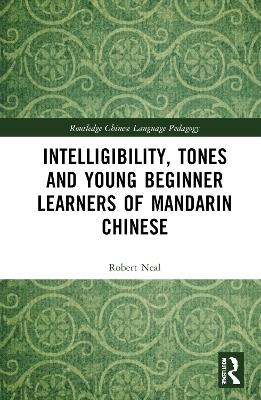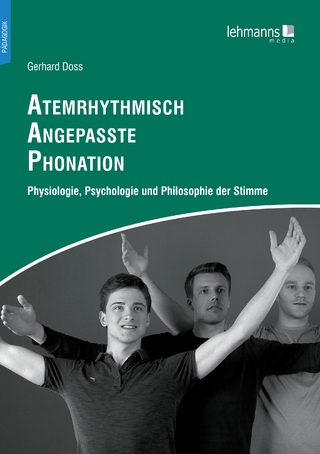
Intelligibility, Tones and Young Beginner Learners of Mandarin Chinese
Routledge (Verlag)
978-1-032-16983-5 (ISBN)
- Lieferbar (Termin unbekannt)
- Versandkostenfrei innerhalb Deutschlands
- Auch auf Rechnung
- Verfügbarkeit in der Filiale vor Ort prüfen
- Artikel merken
Two decades ago, Mandarin Chinese seemed set to become a mainstream school subject in Anglophone settings. Yet current learning outcomes are generally disappointing. Is Chinese too difficult for learners at this level? Should it be left to the posh kids with pushy parents?
Set within the context of teaching and learning Chinese at an inner-city secondary school in the North of England, and adopting a case study research design, this book aims to develop research-informed insights into the nature of the pronunciation challenges facing beginner learners of Chinese.
While existing research has shown that producing native-like tones is difficult for Anglophone learners, the question of how important tones are for intelligibility has been largely ignored. Do heavily accented tones actually matter? Which specific areas of the learners’ speech signal mislead their listeners? How aware are learners of their own pronunciation errors?
Teachers of Chinese may not be able to solve entrenched geopolitical tensions, but we can lay the foundations for a stronger engagement with China through excellent teaching. However, before authoritative pedagogical interventions can be made, far more understanding is required of not only how adolescent beginners learn Chinese in school settings, but also what can be realistically expected of them.
Robert Neal, Manchester Swire Chinese Language Centre Coordinator, The Manchester Grammar School
Table of Contents
List of figures
List of tables
1 Introduction
Overview of the book
2 From ‘nativeness’ to intelligibility
Intelligibility, comprehensibility and accentedness
Mandarin Chinese as a lingua franca
Second language acquisition perspectives on L2 pronunciation
Intelligibility- oriented research
CSL pronunciation research
The tonal system of Mandarin Chinese
Why are tones difficult for L1 English learners?
CSL tonal perception and training studies
CSL intelligibility studies
Presentation of research questions
3 Challenges of ‘real world’ pronunciation research
Teachers as second language acquisition researchers
Epistemological assumptions
Conceptual frameworks
Case study research
Background contextualisation
Sampling strategies
Ethical considerations
Data collection instruments
Speaking tasks
Dictation exercises
Accentedness and comprehensibility ratings
Semi- structured interviews with raters
Stimulated recall interviews
Procedure
Data analysis
Identification and description of intelligibility breakdowns
Raters’ explanations of their ratings and transcriptions
Learners’ explanations of any perceived pronunciation errors
Conclusion
4 Tones and intelligibility
The ten monosyllabic words featured in this chapter
Overall intelligibility levels
Individual intelligibility levels
Interrater reliability
Categorising intelligibility breakdowns
‘Wŏ’ (I/ me)
‘Nĭ’ (you)
‘Hē’ (to drink)
‘Dà’ (big)
‘Chá’ (tea)
‘Suì’ (age/ years old)
‘Rò’ (meat)
‘Shí’ (10)
‘Xué’ (to study)
‘Chī’ (to eat)
Conclusion
5 Accentedness and comprehensibility
Coding frameworks
Learner 1
Learner 2
Learner 3
Learner 4
Learner 5
Learner 6
Learner 7
Learner 8
Learner 9
Learner 10
Conclusion
6 Awareness
Learners’ awareness of their own pronunciation errors during speech production
Learners’ implicit awareness of their own pronunciation errors after speech production
Learners’ explicit awareness of their own pronunciation errors after speech production
Conclusion
7 Evidence- informed perspectives
Focus on global not local intelligibility
Chunking may increase intelligibility levels
Intelligibility is a two- way street
Assess each learner individually
A narrow focus on tones misses the point
‘Perfect’ accents and tones do not have to be put on a pedestal
Raise learners’ awareness levels of their own pronunciation errors
Learning Chinese might not be so ‘different’ after all
Explicit and implicit knowledge in instructed second language acquisition
Conclusion
8 Conclusion
What did I find out?
So what?
Next steps
Teachers as researchers?
Implications for school leaders and policymakers
A final thought
References
Appendix A: Speaking tasks used to elicit L2 Chinese speech samples
Task 1 Read aloud the following 10 words
Task 2 Read aloud the following 10 sentences
Task 3 Role- play activity
Appendix B: Classification of pronunciation errors at the monosyllabic level
Appendix C: Coding framework used to analyse the perceived causes of accentedness
Appendix D: Coding framework to analyse the perceived causes of lower levels of comprehensibility
Appendix E: Coding framework used to analyse learners’ responses to their own intelligibility breakdowns
Code 1: No recognition of breakdown(s)
Code 2: No explanation of breakdown(s)
Code 3: Inaccurate explanation
Code 4: Unsuccessful self- repair
Code 5: Successful self- repair
Code 6: Partial explanation
Code 7: Full explanation
Acknowledgements
Index
| Erscheinungsdatum | 05.02.2025 |
|---|---|
| Reihe/Serie | Routledge Chinese Language Pedagogy |
| Zusatzinfo | 78 Tables, black and white; 13 Line drawings, black and white; 13 Illustrations, black and white |
| Verlagsort | London |
| Sprache | englisch |
| Maße | 156 x 234 mm |
| Themenwelt | Schulbuch / Wörterbuch ► Wörterbuch / Fremdsprachen |
| Geisteswissenschaften ► Sprach- / Literaturwissenschaft ► Sprachwissenschaft | |
| Sozialwissenschaften ► Pädagogik | |
| ISBN-10 | 1-032-16983-4 / 1032169834 |
| ISBN-13 | 978-1-032-16983-5 / 9781032169835 |
| Zustand | Neuware |
| Informationen gemäß Produktsicherheitsverordnung (GPSR) | |
| Haben Sie eine Frage zum Produkt? |
aus dem Bereich


